Locust and bee plasticity in a changing world

Theo Murphy meeting organised by Professor Stephen Simpson, Professor Gene Robinson, Professor Andrew Barron and Dr Darron Cullen.
Locusts and bees, a major pest and a vital pollinator, owe their success to remarkable plasticity. Both species adopt distinct forms in response to changing environments. This meeting contrasts the genomic, neural, and physiological mechanisms of plasticity in both species to deliver a comprehensive understanding. We examine plasticity in response to global change to improve future management of these species.
Poster session
There will be a poster session on Monday 20 May. If you would like to present a poster, please submit your proposed title, abstract (up to 200 words), author list, and the name of the proposed presenter and institution to the Scientific Programmes team no later than 22 April 2024. Please include the text 'Poster abstract submission - Locust and bee plasticity' in the email subject line.
Venue
This is a residential meeting taking place at Hilton Cambridge City Centre Hotel, 20 Downing St., Cambridge CB2 3DT, UK.
Attending this event
- This is a residential meeting intended for researchers in relevant fields
- Free to attend
- Advance registration is essential (please request an invitation). When requesting an invitation, please briefly state your expertise and reasons for attending. Requests are reviewed by the meeting organisers on a rolling basis. You will receive a link to register if your request is successful
- This is an in-person meeting only
- Catering options are available to purchase during registration. Participants are responsible for their own accommodation booking
Enquiries: contact the Scientific Programmes team.
Organisers
Schedule
Chair
Professor Mohamed Babeh Ebbe, Institut du Sahel, Mali
Professor Mohamed Babeh Ebbe, Institut du Sahel, Mali
Mohamed Abdellahi (Ould BABAH) EBBE Mauritanian born in 1964 graduated in 1984 with an engineering diploma from the Higher Institute of Agriculture in Baghdad-Iraq and in 2008 a Ph.D. in Life and Earth Science from Ecole Pratique des Hautes Etudes de Paris (EPHE). He has 39 years of professional experience in rural development management, including 31 in plant protection (Grass Hopper/ Locust and vector control and management), institutional development, project conception, management and evaluation, risk and natural disasters management, rehabilitation and development of resilience of rural and pastoral populations, remote sensing, GIS and data management, TOT, active in applied research with more than 100 publications or joint-publications, including some thirty scientific articles and books. Reviewer for many scientific journals. In higher education, he taught, co-supervised and evaluated several MSC and PHD students in Maghreb and Europe. He has consulted extensively for regional and international organizations particularly in locust control with FAO. He has a proven ability to advocate and mobilize resources. He has obtained half a dozen national, regional and international awards including SIR UVAROV for applied research. He joined the Permanent Inter-State Committee for Drought Control in the Sahel (CILSS) in May 2017, as the Director of the Sahel Institute until 5 February 2024 where he moved as advisor of The CILSS executive Secretary in charge of international partnership and as General commissioner for International Horticulture Doha Expo 2023-2024. At the same time, he is active in the scientific international societies, where he is Executive Director of the International Orthopterist Society and was yearly elected member of complex System Digital Campus of UNITWIN/UNESCO since 2020.
| 09:00-09:05 |
Welcome by the Royal Society and lead organiser
|
|---|---|
| 09:05-09:30 |
A multi-level analysis of locust phase biology: from neurochemistry to mass migration and management
Behavioural phase change initiates and functionally couples the suite of traits that comprise density-dependent polyphenism in locusts. Here I provide an account of a program of research into the behavioural phase transition in the desert locust, involving many colleagues who are at this meeting and spanning levels of biological organisation from within the nervous system of individual locusts, to collective behaviour, to the population dynamics of swarming, with implications for management of the desert locust in North Africa. 
Professor Stephen Simpson AC FRS, University of Sydney, Australia

Professor Stephen Simpson AC FRS, University of Sydney, AustraliaAfter graduating from the University of Queensland as a biologist, Steve undertook his PhD at the University of London, then spent 22 years at Oxford before returning in 2005 as an Australian Research Council Federation Fellow, then ARC Laureate Fellow at the University of Sydney. Steve and David Raubenheimer have developed an integrative modelling framework for nutrition (the Geometric Framework), which was devised and tested using insects and has since been applied to a wide range of organisms, from slime moulds to humans, and problems, from aquaculture and conservation biology to the dietary causes of human obesity and ageing. Steve has also pioneered understanding of swarming in locusts, with research spanning neurochemical events within the brains of individual locusts to continental-scale mass migration. Steve is Executive Director of Obesity Australia. He is a Fellow of the Australian Academy of Science and of the Royal Society of London, a Companion of the Order of Australia, and in 2022 was awarded the Macfarlane Burnet Medal of the Australian Academy of Sciences. |
| 09:30-09:45 |
Discussion
|
| 09:45-10:15 |
Temporal dynamics of phase transitions: Transcriptome profiling in swarming locusts and Circadian plasticity and clock development in bees
Temporal dynamics of phase transitions: Transcriptome profiling in swarming locusts Dr Maeva Techer, Texas A&M University - BPRI, USA Density-dependent polyphenism has evolved multiple times in insect taxa, but locusts often embody this phenomenon (Orthoptera: Acrididae). In response to conspecific population density changes, solitary, shy and cryptic grasshoppers can develop into gregarious, swarming, and conspicuous locusts (ie, gregarization); or revert (ie, solitarization). Extensive research on the mechanical and physiological aspects of these phase transitions has focused on the swarming desert locust (Schistocerca gregaria), one of the 19 recognised locust species. Despite differing temporal dynamics in gregarization and solitarization in desert locusts, both processes are triggered by a sensory cues, including sight, smell, and tactile stimulation. These mechanosensory-induced developmental changes are accompanied by significant gene expression changes in nervous tissues following the phase change. Yet, the intricate molecular mechanisms underlying the early stages of locust phase transition remains unknown. The authors aim to unravel the temporal gene expression changes and regulatory networks underlying phase transitions first in lab-reared S. gregaria. To induce gregarisation, solitarious nymphs isolated for two generations were exposed to crowded cages with high conspecific densities (> 300 individuals) for durations ranging from 30 minutes to 72 hours. Conversely, to induce solitarization, long-term gregarious nymphs were isolated in sensory-independent cages. At each time point, the authors collected and sequenced various nervous and chemosensory tissues involved in environmental cue processing. In this talk, Dr Techer will share insights from 520 tissue-specific transcriptomes sequenced using Illumina short-reads. The time course transcriptomic analysis was guided by the six new reference chromosome-length Schistocerca genomes (~8.5Gb) developed by the BPRI and USDA. Ultimately, she will compare the temporal transcriptomic landscapes of six Schistocercaspecies (including S. americana, S. piceifrons, S. serialis cubense, S. nitens, S. cancellata) displaying varying degrees of density-dependent phenotypic plasticity to pinpoint the molecular origins of locust swarming. Circadian plasticity and clock development in bees Dr Katharina Beer, University of Würzburg, Germany Honey bees are highly plastic in their circadian behavior. Foraging bees display strong rhythms with activity during the day and sleep at night, while nursing bees are arrhythmic in behavior in order to attend the larvae at all times of the day. However, nurse bees switch instantly to rhythmic behavior, when separated from the brood. The scientists do not find such plasticity in solitary bees, which show besides a different lifestyle, also a different clock development. In Dr Beer's presentation, she will introduce circadian plasticity in honey bees and show their comparative work of the circadian system in the honey bee, Apis mellifera, and the solitary mason bee, Osmia bicornis. The speaker wants to raise the question, whether these developmental differences may help to establish circadian plasticity in bees and discuss on the adaptive value of a plastic clock. 
Dr Maeva Techer, Texas A&M University - BPRI, USA

Dr Maeva Techer, Texas A&M University - BPRI, USAMaeva is an evolutionary biologist who seeks to understand how species and populations can rapidly respond and adapt to environmental changes by generating and maintaining variability. Her current research focuses on the genetic basis of Schistocerca locust phase polyphenism, and she is dedicated to contributing to the new generation of integrative biologists and bridging the gap between disciplines to find shared evolution in diverse arthropods. Maeva joined the Behavioural Plasticity Research Institute as a Postdoctoral Researcher at Texas A&M University in 2021. She completed a PhD in Population Genetics on the evolution of insular native honey bees at the University of Reunion Island (where she was born). There, she learned to combine population genetics and demographic inferences and to recognize the social insects' plasticity. She moved on to using whole genome sequencing during her postdoc at the Okinawa Institute of Science and Technology in Japan, where she focused on the most detrimental honey bee parasites, Varroa sp. 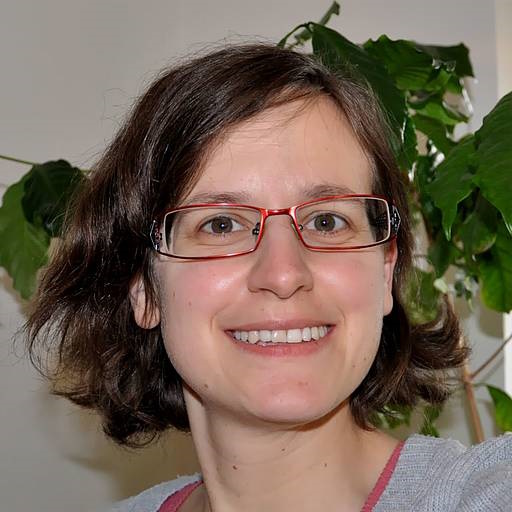
Dr Katharina Beer, University of Würzburg, Germany

Dr Katharina Beer, University of Würzburg, GermanyKatharina Beer is a postdoc at the Biocenter of the University of Würzburg, Germany. During her PhD studies, she conducted research on the circadian clock system of honey bees, solitary bees, aphids and the fruit fly. She focused on the comparative analysis of the circadian network and development of honey bees and solitary bees. In a collaboration work headed by Professor Charlotte Helfrich-Förster (University of Würzburg, Germany) and Professor Guy Bloch (Hebrew University of Jerusalem, Israel) she described the neuronal network of the circadian clock in honey bees. After her graduation, she worked in the group of Professor Ricarda Scheiner (University of Würzburg) to establish genetic manipulation of the circadian clock in honey bees. 2024 she started a project granted to her by the German Research Foundation, in which she analyses the role of circadian clock genes in time place learning behaviour of honey bees. |
| 10:15-10:30 |
Discussion
|
| 10:30-11:00 |
Break
|
| 11:00-11:30 |
Behavioural plasticity and genomics applications in honey bees
Gene expression, in the brain and other key tissues, is dynamic in response to ecological and social experiences, making it a useful tool to explore behavioral plasticity from a variety of perspectives. Clare Rittschof will review studies from their research group where they have combined measures of gene expression with physiological, behavioural, and ecological experiments to investigate causes and consequences of honey bee behavioural plasticity. For example, they have used candidate gene approaches to assess plasticity in aggression in the context of honey robbing, whole genome transcriptomic and candidate gene analyses of immune tissues to assess evidence of landscape nutritional stress, and to explore the connections between the immune system, nervous system, and behaviour in the context of aggression and social grooming. On-going work is incorporating social manipulations in honey bee colonies to determine the role of physiological and epigenetic mechanisms in behavioural plasticity at different timescales. 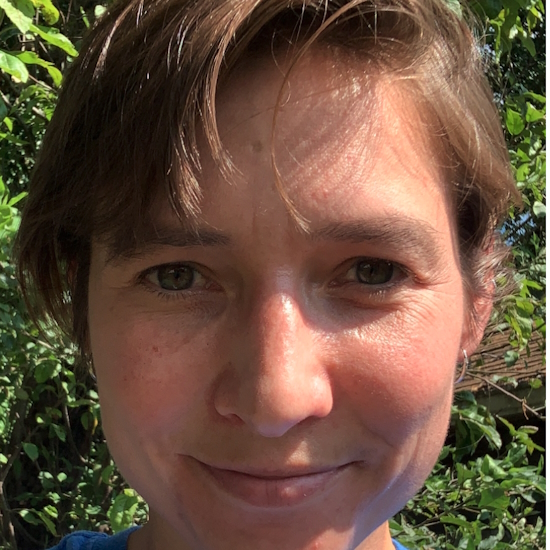
Associate Professor Clare Rittschof, University of Kentucky, USA

Associate Professor Clare Rittschof, University of Kentucky, USADr Clare Rittschof is an Associate Professor of Entomology at the University of Kentucky. Her unusually integrative research program, focused primarily on honey bees, includes approaches from molecular neuroscience to landscape ecology. She studies how the social environment shapes behaviours, and the interplay between social behaviours and health. In pursuit of principles that unify social species, she has studied diverse organisms including humans, and collaborated broadly across the social and medical sciences. Clare has served as a science policy fellow and committee member for the 7,000-member Entomological Society of America (ESA), leading the development of position statements on climate change and pollinator health, and organizing a symposium on policy and communication. She also chaired the Ethics Committee, focused on modernizing the society’s code of conduct to emphasize inclusive behaviour. In 2021, Clare was elected to serve as a New Voices Fellow for the National Academy of Sciences. She has participated in over 45 public outreach events on neuroscience and bee biology in the last five years alone, and she launched a citizen-science honey bee virus project and invites beekeepers into her research lab. Clare’s original courses, Bees & People and The Neuroscience of Pollination, emphasize the diverse cultural and biological connections between pollinators and humans while educating students on the process of scientific consensus building. Clare’s work has been recognized for its unusual breadth and novelty, earning her an Outstanding New Investigator Award (Animal Behaviour Society), an Early Career Innovation Award (ESA), and a Career Development Award from the National Science Foundation. Her research-education program includes a strong emphasis on high school and undergraduate career mentoring in agricultural STEM. |
| 11:30-11:45 |
Discussion
|
| 11:45-12:15 |
Genomic pillars of the social brain: lessons from the honey bee
The “social brain” has given rise to traits that have helped shape life on our planet, including agriculture, construction, governance, language, manufacture, and warfare. Social brains exist on a spectrum, as species vary in social capacities and social cognition. Elucidating the genomic underpinnings of the social brain thus promises insights into phenotypic plasticity that can illuminate the biology of diverse species. This lecture uses the honey bee to reveal genomic pillars of the social brain. Results will be presented demonstrating that: 1) different behavioural states are characterized by different patterns of brain gene expression and gene regulatory network topologies; 2) changes in brain gene expression—due to both environmental and inherited factors--cause changes in behaviour by rewiring gene regulatory networks; and 3) common genetic building blocks are used to support similar types of social capacities in different species, from bees to humans. These findings provide the basis for an understanding of social behavioural plasticity that emphasizes the action of genes across multiple timescales, from physiological to evolutionary. 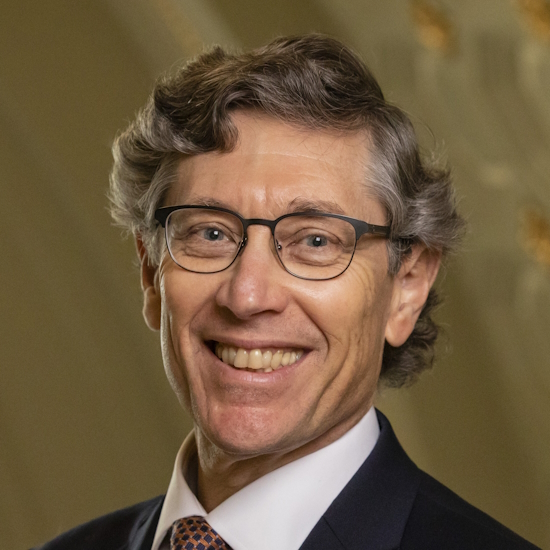
Professor Gene E Robinson, University of Illinois at Urbana-Champaign, USA

Professor Gene E Robinson, University of Illinois at Urbana-Champaign, USAGene E Robinson obtained his PhD from Cornell University in 1986 and joined the faculty of the University of Illinois at Urbana-Champaign in 1989. He holds a University Swanlund Chair and Centre for Advanced Study Professorship, is director of the Carl R Woese Institute for Genomic Biology (IGB) and director of the Bee Research Facility. Robinson pioneered the application of genomics to the study of social behaviour and led the effort to sequence the honey bee genome. He has served on the NIH National Institute of Mental Health Advisory Council and has past and current appointments on scientific advisory boards for companies and foundations with significant interests in genomics. Dr Robinson’s honours include: Guggenheim Fellowship, Wolf Prize in Agriculture and membership in the American Academy of Arts and Sciences, National Academy of Sciences, National Academy of Medicine, and American Philosophical Society. |
| 12:15-12:30 |
Discussion
|
Chair

Professor Spence Behmer, Texas A&M University, USA

Professor Spence Behmer, Texas A&M University, USA
Spence earned a BS in Biology and MS in Biology/Ecology at the University of Nebraska-Lincoln, and a PhD in Entomology from The University of Arizona. He did postdoctoral work at the University of Oxford. He moved to the Department of Entomology at Texas A&M University (TAMU) in 2005. His research is focused on physiological ecology with an emphasis on nutrition, including work on grasshoppers, locusts, crickets, caterpillars, aphids, bugs, ants, honey bees, fruit flies and black soldier flies. His current research is focused on locust phase change (via the NSF funded Behavioral Plasticity Research Institute), honey bee nutrition across landscapes (funded by the USDA), and insects as alternative sources of protein (funded by NSF). He is the Founding Chair of the Ecology and Evolutionary Biology PhD Program at TAMU, co-editor for the Journal of Insect Physiology, and served as Chair of the 2019 Plant-Herbivore Interactions Gordon Research Conference.
| 13:30-14:00 |
The sweet taste of nectar: specialism in the sense of taste revealed in bees
Floral nectar is a carbohydrate-rich reward created by plants to entice pollinating insects to visit. Bees and other insects use their sense of taste to make rapid decisions about food quality. In insects, coding for carbohydrates is thought to occur through the elicitation of action potentials (spikes) in a single, sugar-specialized gustatory receptor neuron (GRN) housed in each sensillum. In bees, coding for sugars appears to be much more specialised and involved the responses of several neurons in each sensillum. For example, Professor Wright's lab discovered that stimulation with high value sugars causes bursts of coherent spikes that involve interactions among two neurons. The scientists have recently discovered that the majority of neurons (three out of four) in the sensilla on the galea of the bee’s mouthparts respond to sugars, some of which produce bursts of spikes which appear to encode stimulus valence. In this talk, the speaker will discuss how these mechanisms contribute to the control of feeding and to the discrimination of floral nectar. 
Professor Geraldine Wright, University of Oxford, UK

Professor Geraldine Wright, University of Oxford, UKGeraldine Wright is the Hope Professor of Zoology (Entomology) at the University of Oxford. She originally studied botany at the University of Wyoming and received a DPhil in Zoology from the University of Oxford in 1998. Her lab investigates how bees detect, learn about, and regulate their intake of nutrients and secondary metabolites. Her lab has identified that compounds like caffeine found in floral nectar and pollen enhance the learning and memory performance of honeybees. Her lab has also quantified the contribution of nutrients found in pollen to the mechanisms of feeding in bees. |
|---|---|
| 14:00-14:15 |
Discussion
|
| 14:15-14:45 |
Social organisation and honeybee behavioural plasticity in a changing world
Honeybees have long been model organisms for their impressive social organisation. Each individual in a honeybee colony comprising up to 30,000 members appears to know exactly which task she has to perform to allow for an optimal functioning of the entire colony, which is considered a “super organism”. Their unique behavioural plasticity allows honeybees to adapt to a large range of environmental conditions, so that they are distributed across all continents apart from the arctic regions. However, climate change, invasive species, environmental pollutants and modern agriculture have been placing an enormous degree of stress on these fascinating insects, particularly in the last few decades. How far their physiological and behavioural plasticity will allow the bees to cope with the harsh environmental conditions of the future is an open question. Professor Scheiner will give an overview of their current knowledge on the fundamental mechanisms underlying honeybee social organisation and its plasticity. Further, the author will present their latest data showing how this behavioural flexibility is affected by environmental stressors in a changing world, including environmental pollutants and invasive species. Their dataset will provide an important basis for a fruitful discussion on honeybee plasticity and how honeybees will be able to cope with future challenges imposed by global change. 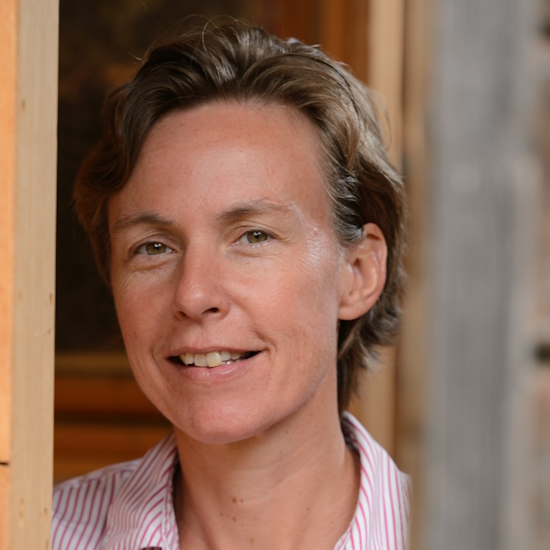
Professor Ricarda Scheiner, University of Würzburg, Germany

Professor Ricarda Scheiner, University of Würzburg, GermanyAfter their studies in Biology and English Ricarda Scheiner performed their doctoral thesis on the importance of the individual evaluation of sucrose stimuli for honeybee learning performance with Joachim Erber (TU Berlin, Germany) and Robert Page (ASU Davis, USA), who shaped my future career with their inspiring ideas on honeybees. Finishing their PhD project in 2001 Ricarda stayed at TU Berlin for a postdoc on the sensory responsiveness of honeybees before they moved to UP Potsdam (Germany) with their own Heisenberg group. Here, Ricarda intensified their work on the molecular mechanisms underlying honeybee behavioural plasticity. Since 2014, they have been full professor at JMU Würzburg (Germany) working on social organisation and cognitive behaviour in honeybees including different species across the world and their adaptation and behavioural plasticity under environmental stress. |
| 14:45-15:00 |
Discussion
|
| 15:00-15:30 |
Break
|
| 15:30-16:00 |
How nutrients mediate the impacts of global change on locust outbreaks and plasticity
Locusts occasionally undergo massive population irruptions and form migratory swarms that can devastate food security. Plant nutrients are a key variable influencing locust population dynamics and plasticity, but the relationship is not straightforward. For an herbivore, plant quality depends not only on the balance of nutrients and antinutrients in plant tissues, which are influenced by land use and climate change, but also on the nutritional state and demands of the herbivore, as well as its capacity to extract nutrients from host plants. For gregarious locusts, low nitrogen environments can be beneficial because they supply high energy rates that support migration. Here the speaker will discuss the interactions between global change, nutritional landscapes, and locust ecophysiology. The author will review lab and field research on the topic and present new work showing how global change, such as land degradation and elevated ambient CO2 levels, that decrease the protein:carbohydrate ratios of plants are predicted to broadly promote locust outbreaks and migration. 
Arianne Cease, Associate Professor, Arizona State University, USA

Arianne Cease, Associate Professor, Arizona State University, USAAfter serving in the US Peace Corps in Senegal following the 2003-05 desert locust upsurge, Arianne Cease completed her dissertation in 2012 connecting livestock grazing with locust nutrition and migration in the Inner Mongolian steppes. She was advised by Jon Harrison and Jim Elser (ASU, USA) and collaborated with Kang Le’s group (CAS, Beijing, China). Arianne then postdoc’d with Steve Simpson (USYD, Australia) before joining the ASU faculty in 2014. In 2018, she launched the Global Locust Initiative (GLI) that she directs with Rick Overson. GLI promotes transdisciplinary locust research and management and global food security. Arianne has received several awards, including NSF CAREER, Popular Science’s Brilliant 10, and Outstanding Faculty Mentor (ASU). Her work on locust nutrition, physiology, ecology, and governance spans collaborations and field locations in North and South America, Australia, China, Europe, and West Africa, and is supported by the NSF, USDA, USDA, and FFAR. |
| 16:00-16:15 |
Discussion
|
| 16:15-17:00 |
Flash talks
|
| 17:00-18:15 |
Poster session
|
Chair

Professor Gregory Sword, Texas A&M University, USA

Professor Gregory Sword, Texas A&M University, USA
Gregory Sword, PhD, is a Regents Professor and Charles R Parencia Endowed Chair in Entomology in the Texas A&M University Department of Entomology. Prior professional appointments include working on faculty at the University of Sydney in Australia, as a Research Ecologist with US Department of Agriculture, and as postdoc at Oxford University. His research on transboundary agricultural pests including locusts has led to advances spanning ecology, evolution, genomics, nutrition, microbiology, and pest management. To date, he has contributed to the receipt of over US$22 million in research funding, and published 145 peer-reviewed journal articles and book chapters that have been cited over 8500 times. His ground-breaking research into plant-microbe interactions spawned seven US patents with novel commercial agricultural products being sold around the world. The national and international impact of Sword’s research has been recognized through the receipt of multiple awards for career achievement, innovation, environmental excellence, and integrated pest management.
| 11:30-11:45 |
Discussion
|
|---|---|
| 09:00-09:30 |
From models to reality and back: using ecological modelling to better understand and forecast locusts
In a scientific process, models are developed with the objective of helping to answer a question. These questions can be related to fundamental science or on the contrary be applied to solve a real-world problem. Understanding better the behaviours of locusts and the repercussion of their high levels of plasticity on population dynamics have been the topics of multiple researches since the discovery of phase polyphenism by Sir Uvarov in 1921. In this context, ecological models are used to illustrate or combine hypotheses on locust behaviours, though rarely confronting multiple real-world observations to model predictions. On the other end, field data have been very often used to develop models to infer on locust population dynamics but rarely to develop applied tools that would help in the management context. With the help of several examples from works developed in the team of scientists during the last years, this talk will illustrate how they have tackled these two issues: 1- bringing multiple patterns into the representation of behavioural and population dynamics processes; 2- developing operational tools to help the field teams in charge of the preventive management of locusts. Finally, these studies illustrate the power of confronting multiple real-world patterns with models’ outcomes to make strong inferences and being more confident on the model’s reliability when answering key applied questions. Co-authors: Marie-Pierre Chapuis, Esther Diouf, Jamila Dkhili, Saïd Ghaout, Fanny Herbillon, Amina Idrissi, Michel Lecoq, Lucile Marescot, Christine Meynard, Jean-Pierre Rossi, Camille Vernier. 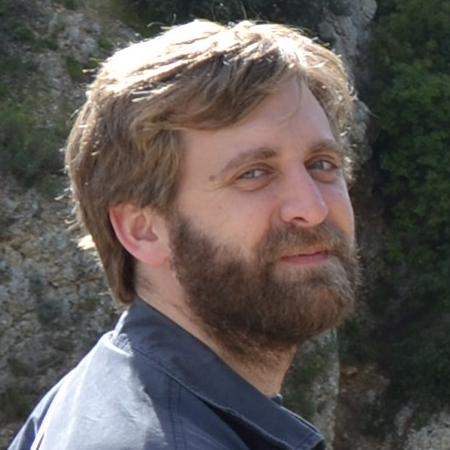
Dr Cyril Piou, CIRAD, France

Dr Cyril Piou, CIRAD, FranceCyril Piou received a PhD in ecology from the University of Bremen, Germany in 2007. He specialized into agent-based modelling in ecology and continued on the topic during two postdocs at the University of Dresden, Germany and at the French Research Agronomy Institute (INRA). He was hired by Cirad (French agricultural research and cooperation organization working for the sustainable development of tropical and Mediterranean regions) in 2010 as an ecological modeler in the locust team. Since then, Cyril has developed researches in partnership with Western and Northern African countries to study the ecology and management of Desert Locust. He spent 4 years (2013-2017) working on-site in the National anti-locust centre of Morocco. Since 2010, he supervised 6 PhDs, 4 Post-Docs and several other students and published 40 articles on locust ecology and management. He defended a Habilitation to conduct Researches at the University of Montpellier in 2022. |
| 09:30-09:45 |
Discussion
|
| 09:45-10:15 |
Sensory flexibility in the desert locust - from social interactions to foraging decisions
Flexibility in foraging behaviour allows animals to maximize foraging success in unpredictable environments. The desert locust Schistocerca gregaria exhibits an extreme example of behavioural flexibility. It is well documented that with increasing densities, locusts switch from avoiding conspecifics to approaching them, and from sedentary foraging to collective migrations. In this presentation, I will discuss our work on behavioural, sensory, and neural processes governing gregarious locust behaviour. I will start with a behavioural evaluation of locusts in natural and virtual group contexts, revealing a flexible behaviour that is shaped by the availability of food sources and conspecifics. In the context of marching, visual motion cues from conspecifics are sufficient to drive collective motion in gregarious locusts, while for foraging decisions, the integration of visual and olfactory cues is necessary. Calcium imaging from the primary olfactory centre (the antennal lobe) provides further clues into the mechanisms by which this is achieved. While the neural representation of social odours is similar in gregarious and solitarious locusts, the evaluation of food-related components in the presence of social odours is significantly enhanced in gregarious animals. We describe the antennal lobe components mediating this plasticity and how this can facilitate the detection of sparse food sources in crowded swarms. 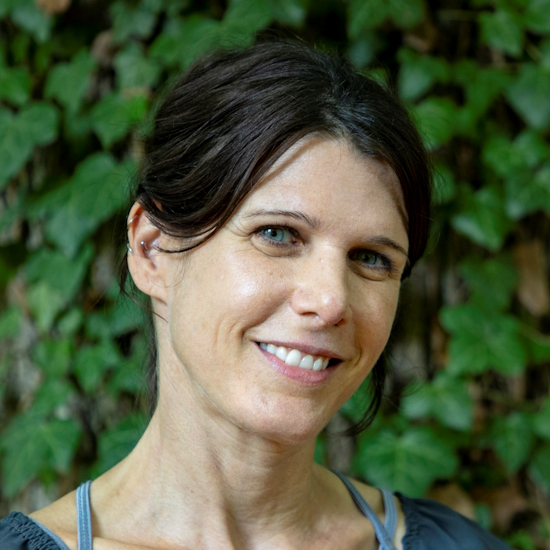
Dr Einat Couzin-Fuchs, University of Konstanz, Germany

Dr Einat Couzin-Fuchs, University of Konstanz, GermanyDr Einat Couzin-Fuchs is a Principal Investigator at the Centre for the Advanced Study of Collective Behaviour, University of Konstanz since 2018. Her training included a PhD in Neuroscience from Tel Aviv University and a postdoc in Mechanical Engineering at Princeton University. These introduced me to diverse concepts and techniques in insect neuroethology, which she now utilize and further develop to study the neural mechanisms of adaptive behaviour. Dr Couzin-Fuchs is fascinated by how the brain integrates noisy, probabilistic and multimodal information for appropriate decisions, especially in social contexts when decisions among individuals are coupled. By combining behavioural assays with 'real' and virtual social environments, as well as establishing tools and protocols for electrophysiology and functional imaging, her group delves into the sensory coding and interpretation of social stimuli. Their goal is to unravel neural mechanisms that allow animals (currently cockroaches and locusts) to flexibly adapt in changing social circumstances. |
| 10:15-10:30 |
Discussion
|
| 10:30-11:00 |
Break
|
| 11:00-23:30 |
Stress and the superorganism
The social insect colony has been described as a superorganism, or a factory-fortress. We might expect bee colonies with their stored resources, temperature regulation abilities, social immunity and defences to be particularly resistant to stress, and yet we have seen a worldwide doubling in honey bee colony failure rates in the last two decades. Here we discuss the interaction between the stress responses of individual bees and social stress responses. We propose that the social buffering of stress in a honey bee colony is effective in tolerating a level of chronic stress, but if the buffering capacity is exceeded a hive is vulnerable to rapid and catastrophic social decline. We present new work on how we might reliably detect an early warning that a bee colony is vulnerable to failure while there is still time to effectively intervene. 
Professor Andrew Barron, Macquarie University, Australia

Professor Andrew Barron, Macquarie University, AustraliaProfessor of Comparative Neuroscience, Director of The Macquarie Minds and Intelligences Initiative at Macquarie University. Andrew Barron studies the evolution of cognitive systems. His research is currently supported by awards from the Templeton World Charity Foundation, The Australian Research Council and the Engineering and Physical Sciences Research Council of the United Kingdom. He has held fellowships from the Australian Research Council, the Leverhulme Trust, The Fulbright Commission and The Royal Society of London. |
| 11:45-12:15 |
Serotonergic modulation of odour-evoked neural and behavioural responses in solitary and gregarious locusts
In insects, serotonin is a key neuromodulator that is linked with the regulation of many behaviours, including feeding, socialization, aggression, and mating. In locusts, an increase in serotonin levels in the brain is highly correlated with the solitary phase, whereas a serotonin spike in the thoracic ganglion is known to trigger the transformation of solitary animals into gregarious ones. It is also known that solitary and gregarious locusts have different behavioural responses to a variety of sensory cues including olfactory ones (for example, repulsion to conspecific odorants in the solitary phase must switch to attraction in the gregarious locusts). How such variations arise and the role of serotonin in achieving flexible neural-to-behavioural response mapping is not fully understood. I will present results from our recent study examining how serotonin modulates neural and behavioural responses to odorants in solitary and gregarious locusts (Schistocerca americana). I will explain how serotonin could enhance the olfactory sensitivity without compromising the robustness of odour recognition and present a simple model to explain how serotonin modulates odour-evoked neural and behavioural responses. 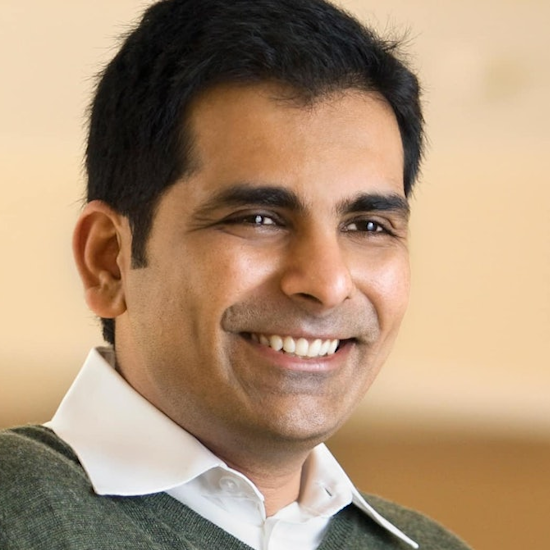
Professor Barani Raman, Washington University in St Louis, USA

Professor Barani Raman, Washington University in St Louis, USABarani Raman is a Professor in Department of Biomedical Engineering at Washington University. He received his Bachelor of Engineering in Computer Science with distinction from the University of Madras, and the M.S. and Ph.D. degrees in Computer Science from Texas A&M University, respectively. Following his doctoral studies, he became a joint postdoctoral fellow at the National Institutes of Health and the National Institute of Standards and Technology. He is the recipient of the 2011 Wolfgang Gopel Award from the International Society for Olfaction and Chemical Sensing. His research interests include sensory and systems neuroscience, sensor-based machine olfaction, machine learning, biomedical intelligent systems, and dynamical systems. |
| 12:15-12:30 |
Discussion
|
Chair
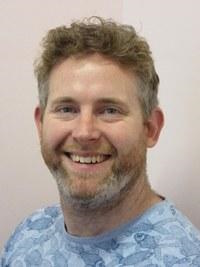
Dr Darron Cullen, University of Hull, UK

Dr Darron Cullen, University of Hull, UK
Dr Darron Cullen studied Biology at the University of Oxford (Wadham College), and obtained his PhD from the University of Sydney in 2011, supervised by Professors Steve Simpson and Gregory Sword. Darron then held postdoctoral positions at the University of Cambridge, KU Leuven (Belgium) and University of Lincoln, before taking up a Lectureship in Biology at the University of Hull in 2023. Darron investigates the sensory and physiological bases of behaviour and is particularly interested in phenotypic plasticity, which he explores using social and sexual systems in locusts. He is a Fellow of the Royal Entomological Society, and co-convenor of their annual Orthoptera meeting.
| 13:30-14:00 |
The interplay of genes, behaviour and environment in shaping phenotypic plasticity
Phenotypic plasticity is determined by genetic and environmental factors, including social environment. However, organisms can also shape the environmental conditions they experience through their own behaviours. They will discuss examples where bees’ behaviours influence the social and nutritional environment that they experience, and thus determining their phenotypic outcomes. In the first set of examples, they will consider the genetic, nutritional, and social factors that influence reproductive division of labour in honey bees, and how intragenomic conflict between matrigenes and patrigenes modulates social preferences and ultimately phenotype. In the second set of examples, they will discuss how seasonal variation in floral resources may influence seasonal phenotypic plasticity in bees and potentially vice versa, and how these can be impacted by land use and climate change. Understanding how genes, behaviour, and the environment interact to shape phenotype requires detailed analyses in field-realistic conditions where individuals can freely interact with each other and their surroundings. 
Professor Christina Grozinger, Pennsylvania State University, USA

Professor Christina Grozinger, Pennsylvania State University, USAChristina Grozinger is the Publius Vergilius Maro Professor of Entomology and the Director for the Centre for Pollinator Research at Penn State University. She is a Fellow of the Entomological Society of America and the American Association for the Advancement of Science. She was awarded the 2021 National Academy of Sciences Prize in Food and Agriculture Sciences and 2023 Penn State President’s Award for Excellence in Academic Integration. Christina received her bachelor's degree in chemistry and biology at McGill University, her master's and doctoral degrees from Harvard University, and was a Beckman Institute Fellow at the University of Illinois, Urbana-Champaign. Grozinger uses an integrative approach – from genes to spatial ecology – to study bee behaviour and support management and conservation of bees. |
|---|---|
| 14:00-14:15 |
Discussion
|
| 14:15-14:45 |
The influence of the social environment on the brain circadian transcriptome of two social bees differing in the level of social complexity
Social insects provide an attractive model system for studying natural socially-regulated plasticity in circadian rhythms because task performance and the social environment influence the expression of circadian rhythms. We tested the influence of brood care behaviour and colony environment on the whole brain transcriptome in two highly social bee species showing different levels of social complexity. The Western honey bee Apis mellifera is highly social with perennial colonies containing tens of thousands of individuals, whereas colonies of the bumble bee Bombus terrestris are annual and contain up to a few hundred worker bees. We combined behavioural observations and time-series brain RNA sequencing to study the influence of the colony environment and brood tending on circadian gene expression. We sampled bees experiencing four different social environments: Foragers (colony, no brood care), nurses (colony + brood care), individually isolated ("solitary") worker bees (no colony or brood care), and solitary bees with brood (brood care, no colony environment). To identify circadian-regulated genes and molecular processes, we performed circadian analyses, multivariate analysis, WGCNA, and enrichment analyses. In both species, the canonical "clock genes" were cycling as found in previous studies, validating our experimental design and RNA sequencing procedures. As expected, in both species we found significantly more circadian-regulated genes in behaviourally rhythmic foragers and the lowest number of cycling transcripts in nurses that care for the brood around the clock. Surprisingly however, the solitary with brood group had the second highest number of circadian-regulated genes, which suggests that factors in the colony other than the brood have strong influence on circadianly regulated processes in the brain. We will discuss genes and pathways that are circadian-regulated by the colony environment and brood care and the implications of these findings to the social organization of the colony. 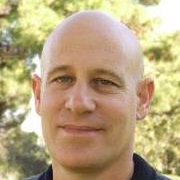
Professor Guy Bloch, Hebrew University of Jerusalem, Israel

Professor Guy Bloch, Hebrew University of Jerusalem, IsraelGuy Bloch is a professor of biology at the Hebrew University of Jerusalem and the current Head of the Alexander Institute of Life Sciences. Bloch's group research uses various sociobiological, behavioural, physiological and molecular approaches for understanding the evolution of sociality and the physiological and molecular basis of social behaviour using bees (mainly bumble bees and honey bees) as the main research models. The main research topics include understanding the interrelationships between biological clocks, sleep control and social behaviour, the influence of hormones, especially juvenile hormone (JH), on the evolution of sociality and social behaviour, and deciphering the sociobiology of bumble bee colonies, including mechanisms influencing division of labour, body size and caste determination. |
| 14:45-15:00 |
Discussion
|
| 15:00-15:30 |
Break
|
| 15:30-16:00 |
Schistocerca (Orthoptera: Acrididae) as a model clade for understanding the evolution of phenotypic plasticity
The genus Schistocerca (Orthoptera: Acrididae) includes some of the most devastating locust species in the world, including the desert locust (S. gregaria), the Central American locust (S. piceifrons), and the South American locust (S. cancellata). These locust species show an extreme form of density-dependent phenotypic plasticity in which cryptic and shy individuals, known as the solitarious phase, can transform into conspicuous and gregarious individuals, known as the gregarious phase, in response to changes in local population density. In fact, this “locust phase polyphenism” is what makes the locusts distinctly different from regular grasshoppers. Intriguingly, Schistocerca includes 45 species, most of which are non-swarming sedentary grasshopper species, and phylogenetic studies have shown that the locust species do not form a monophyletic group, suggesting that locust phase polyphenism has evolved multiple times in the genus. Furthermore, recent experimental studies have indicated that some of the non-swarming grasshopper species show reduced density-dependent phenotypic plasticity, suggesting that Schistocerca as a whole is an exciting model clade that can be used to study how phenotypic plasticity has evolved as species diverge. In 2020, the Behavioral Plasticity Research Institute (BPRI) was launched with funding from the National Science Foundation Biology Integration Institute (NSF-BII) program. Through the BPRI, high-quality chromosome-length assemblies of six Schistocerca species, including three locust and three non-swarming grasshopper species, were produced. In this presentation, the author will discuss the new insights enabled by the new omics data on the evolution of phenotypic plasticity in Schistocerca as well as other novel findings enabled by this collaborative initiative. 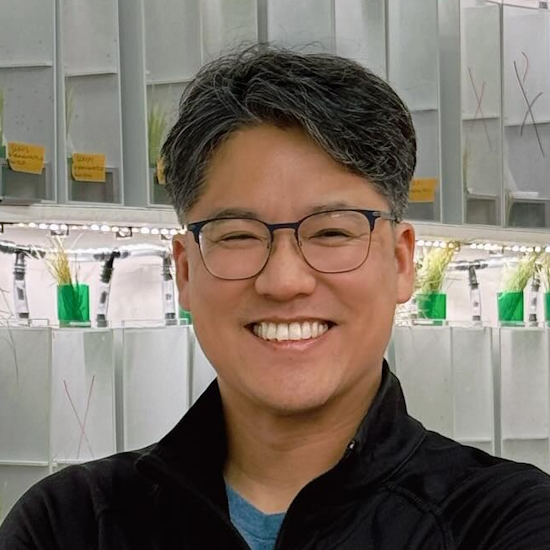
Professor Hojun Song, Texas A&M University, USA

Professor Hojun Song, Texas A&M University, USADr Hojun Song received his PhD in Entomology from the Ohio State University in 2006. He joined the Department of Entomology as Assistant Professor in 2015, was promoted to Associate Professor in 2016, and Full Professor in 2022. Dr Song’s two main research areas are: (i) biodiversity of Orthoptera and (ii) the evolution and mechanisms of phenotypic plasticity using swarming locusts as a model system. Dr Song has received over $16 million in external research funding from the National Science Foundation and the United States Department of Agriculture, and has published 85 peer-reviewed articles. He has received a number of awards, including NSF CAREER award (2013), Fulbright Fellowship (2019), and the Distinguished Achievement Awards in Teaching from the Entomological Society of America (Southwestern Branch) (2021). Dr Song is Co-Director of the NSF Behavioural Plasticity Research Institute (BPRI) and Editor-in-Chief of the journal Insect Systematics & Evolution. |
| 16:00-16:15 |
Discussion
|
| 16:15-17:00 |
Panel discussion: synthesis
|
